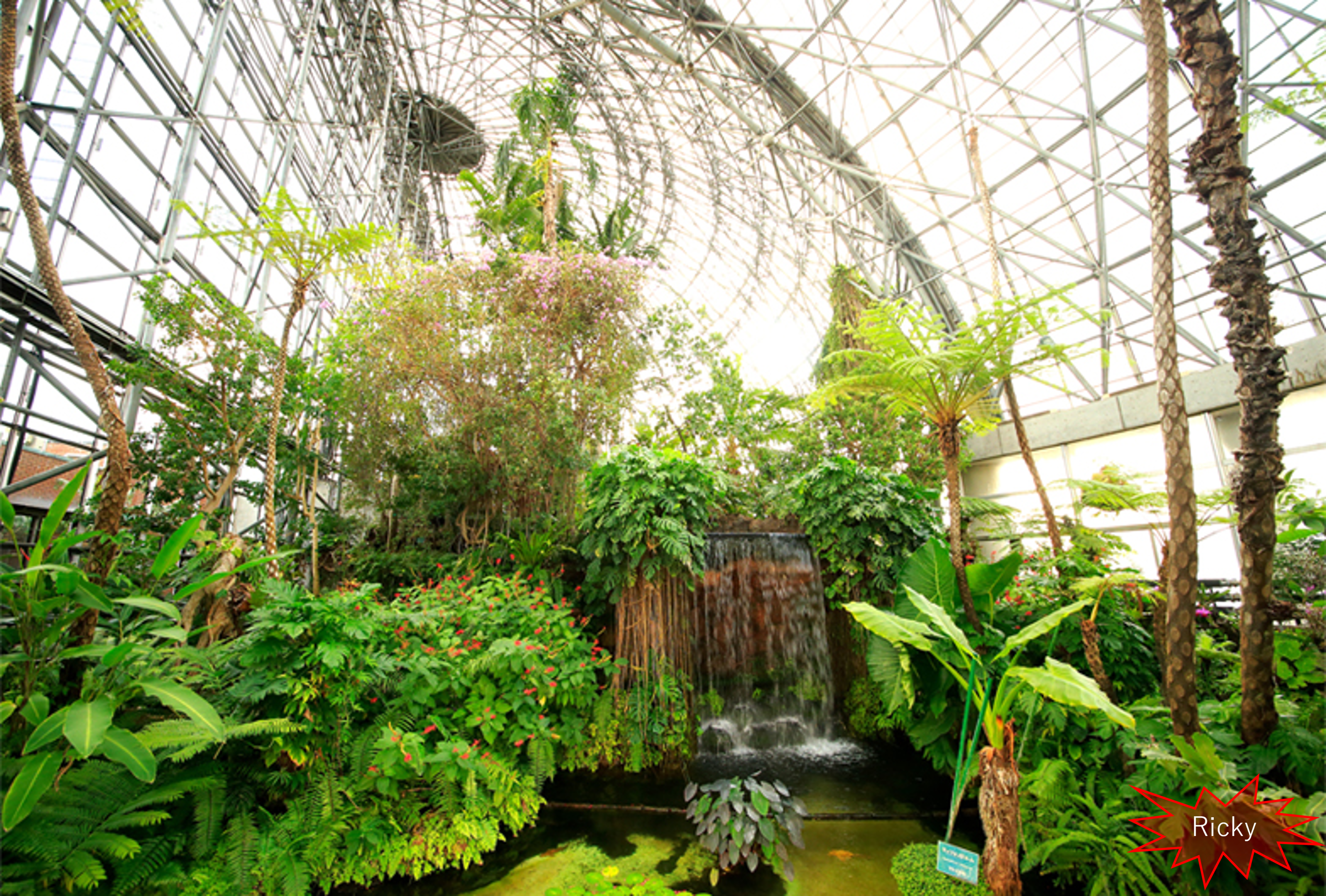A forest of palm trees, dazzling flowers like hibiscus, leaves like giants’ hands. A pond with a cascading waterfall. The visitors are lulled into the illusion that they have wandered into the depths of the Amazon. Plants, many of which I had never seen before, were basking in the sunlight and stretching their branches and leaves. Looking up, one sees a 28-meter-high glass dome. The artistic mixture of nature and artifacts creates a fantastic space that gently envelops visitors. This is the Yumenoshima Tropical Botanical Garden.
What is Yumenoshima Tropical Botanical Garden?

The botanical garden is located in Yumenoshima Park, Yumenoshima, Koto-ku, Tokyo.
It was established in 1988. Since April 1, 2006, the garden has been managed by the Hibiya Amenis Yumenoshima Group, which consists of six companies: Hibiya Amenis, Hibiya Kadan, Yamatake, Nikken Sogyo, Interiorscape, and Ecol Systems, under a designated manager system. The new company is now managed by the Hibiya Amenis Yumenoshima Group. The facility uses residual heat from the New Koto Waste Incineration Plant.
Main Facility: Large Greenhouse
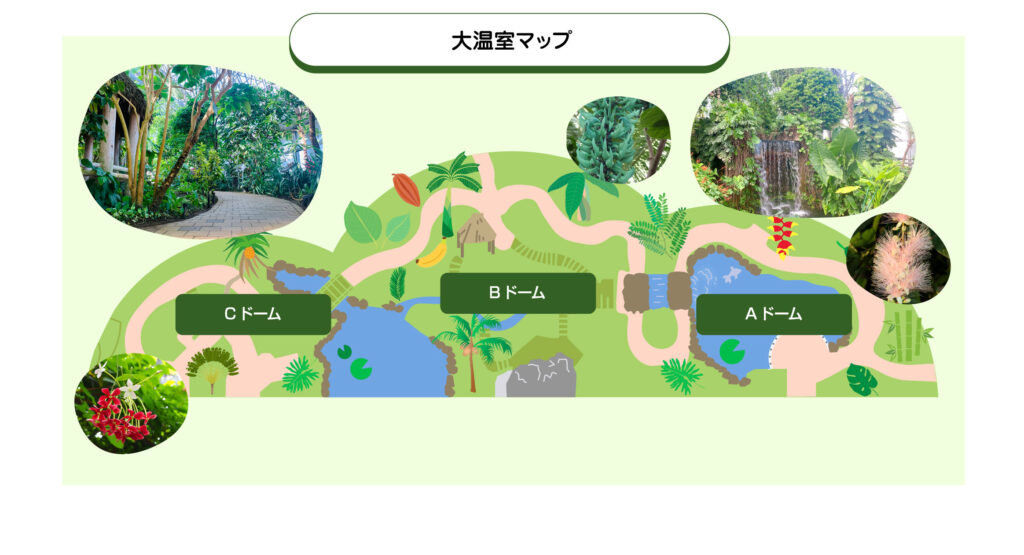
It is the central facility and has a distinctive appearance like three domes stacked on top of each other. It is known for being supplied with high-temperature water from the adjacent New Koto Garbage Disposal Plant.
・Dome A “Tree ferns and riparian landscape”
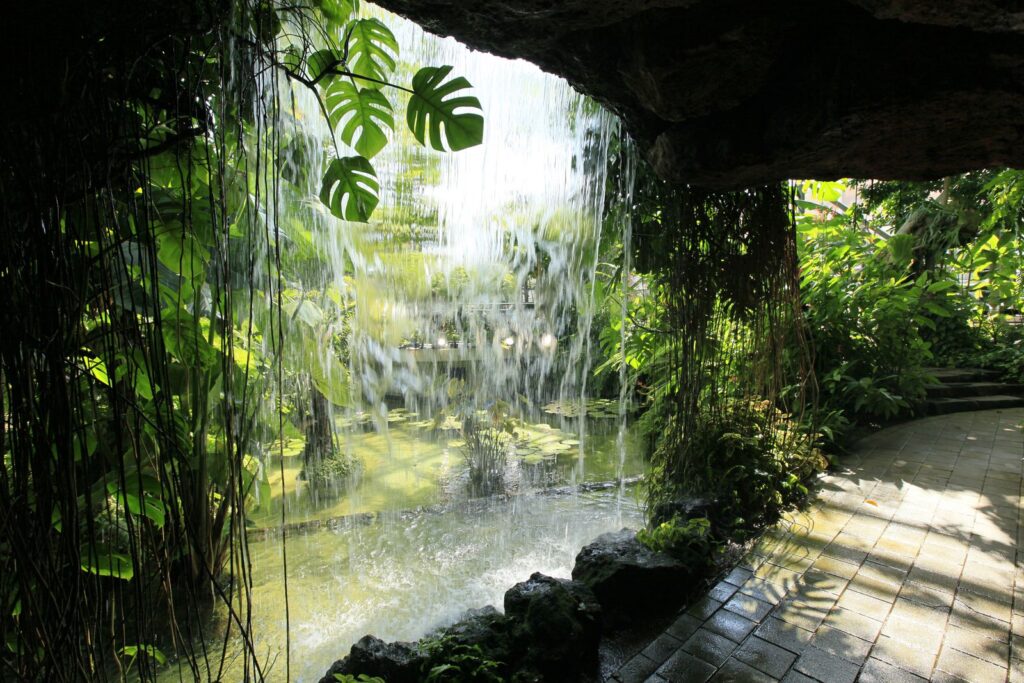
Entering the large greenhouse, visitors can see plants that inhabit the waters of the tropics. Tropical water lilies sway in a pond with a cascading waterfall, and a tree fern, the lizard’s hego, spreads its large leaves at the pond’s edge. Mangrove plants that inhabit tropical estuaries grow thickly, recreating a tropical waterside landscape. Pass under the overhead waterfall and through the tunnel to enter Dome B.
・Dome B “Palm and Human Landscape

A “tropical house” stands amidst a forest of giant palms, including giant palms. This tropical house uses nipa palm leaves as roofing material and provides an airy resting space. Around the house, rare flowers such as jade honeysuckle and torch ginger bloom. Coconut palms, bananas, cacao, and other tropical plants that are closely related to our lives as well as those of the people of the tropics are also planted.
・C Dome “Plants of Ogasawara and the Aucuba Basin
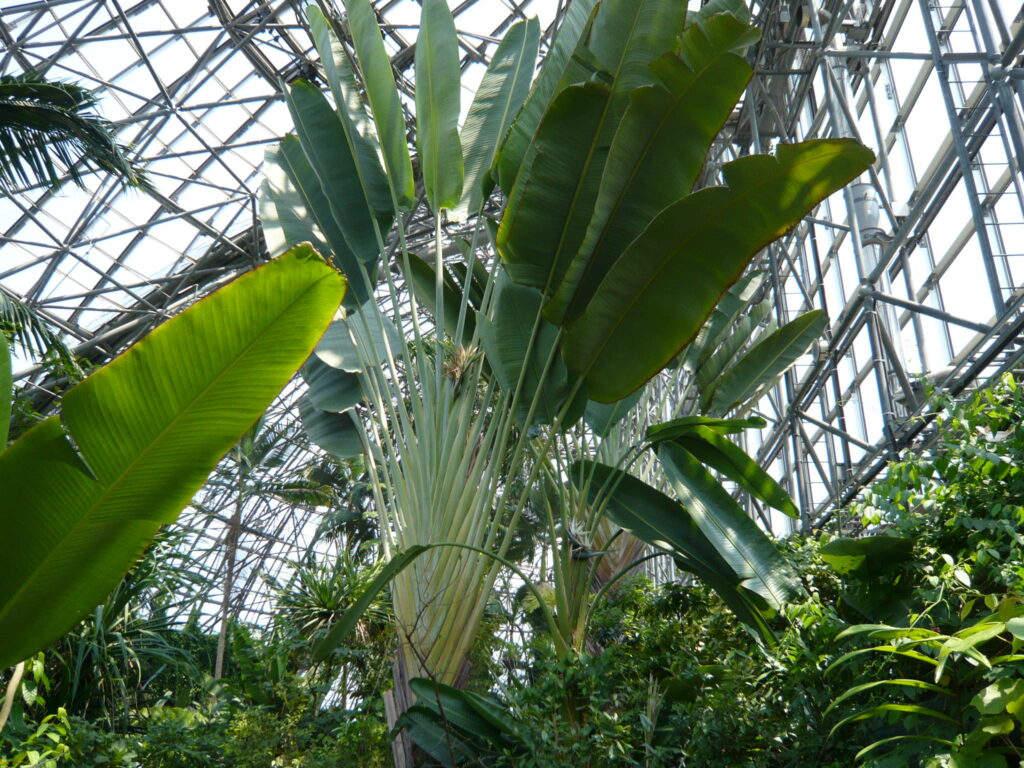
Many plants from the Ogasawara Islands, which are registered as a World Natural Heritage site, can be seen here, including the octopus tree, Japanese nokosh, and munin hime camellia. The Ogasawara Islands are a group of subtropical islands in the southern ocean, 1,000 km from central Tokyo. Because of their isolation from the continent, many of the inhabitants are “endemic” species that have evolved on their own, and many of these species are endangered. Near the exit, the huge leaves of the oriental skunk cabbage, which is native to Madagascar, complete the scenery of the large greenhouse.
Other
・Insectarium

Insectivorous plants are strange plants that capture insects and use them as nutrients for themselves. By supplementing their nutrients in this way, they can grow even in areas lacking in nutrients, such as wetlands and rocky areas. Here, about nine species, including the Euglena and the Diptera, are always on display, and their insect-capturing mechanism is explained.
・plaza in front of a building
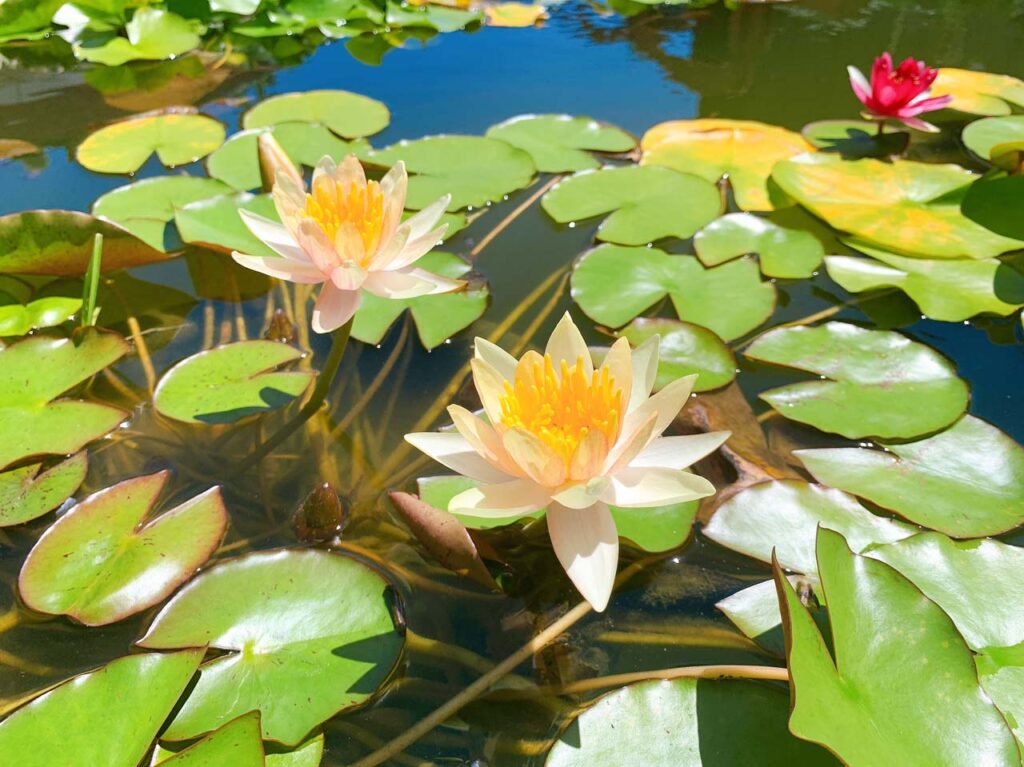
It grows daylilies, bougainvillea, and other tropical plants that are relatively resistant to cold and can be grown outdoors. In spring, the brushwood hedges turn bright red with flowers, and in summer, tropical water lilies are at their best, creating a picturesque scene. On the grassy lawn shaded by canary palms, visitors can spread out sheets and enjoy their own meals.
・Australian Garden
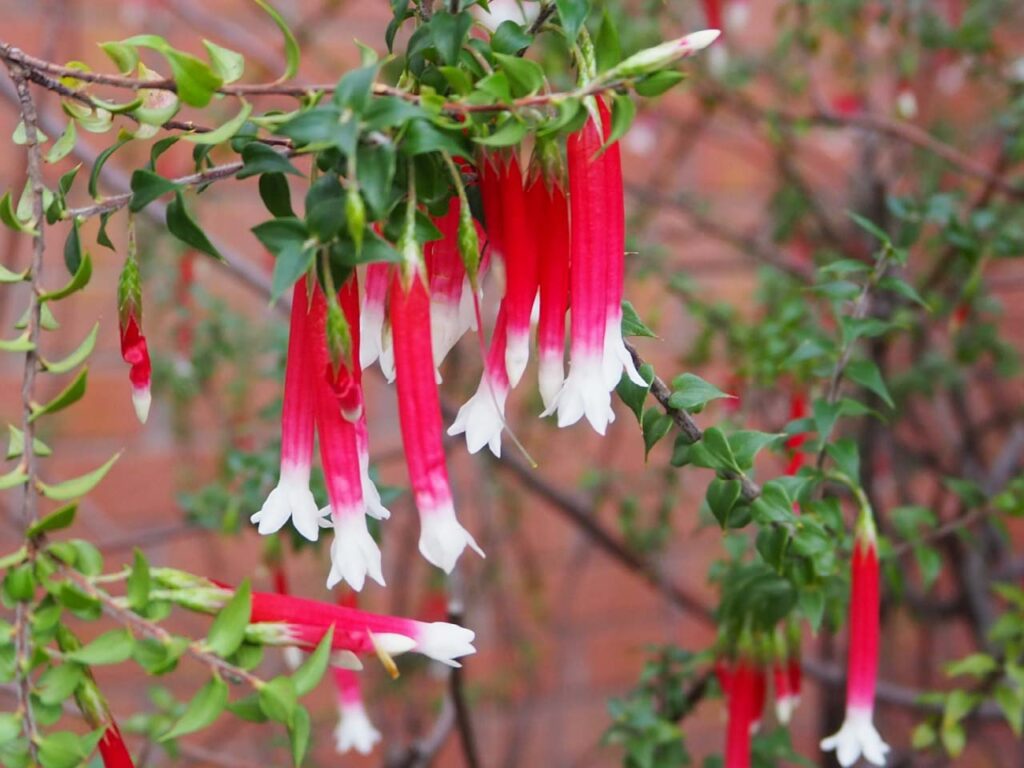
Australia is located almost directly south of Japan and has four major climates: tropical, subtropical, desert, and temperate. In this varied climate and vast nature, there are about 24.000 species of native plants. And many of them are characterized by their unique shapes, such as banksias and callistemon. From the garden, visitors can also enjoy the view of a forest of eucalyptus trees native to Australia.
・herb garden
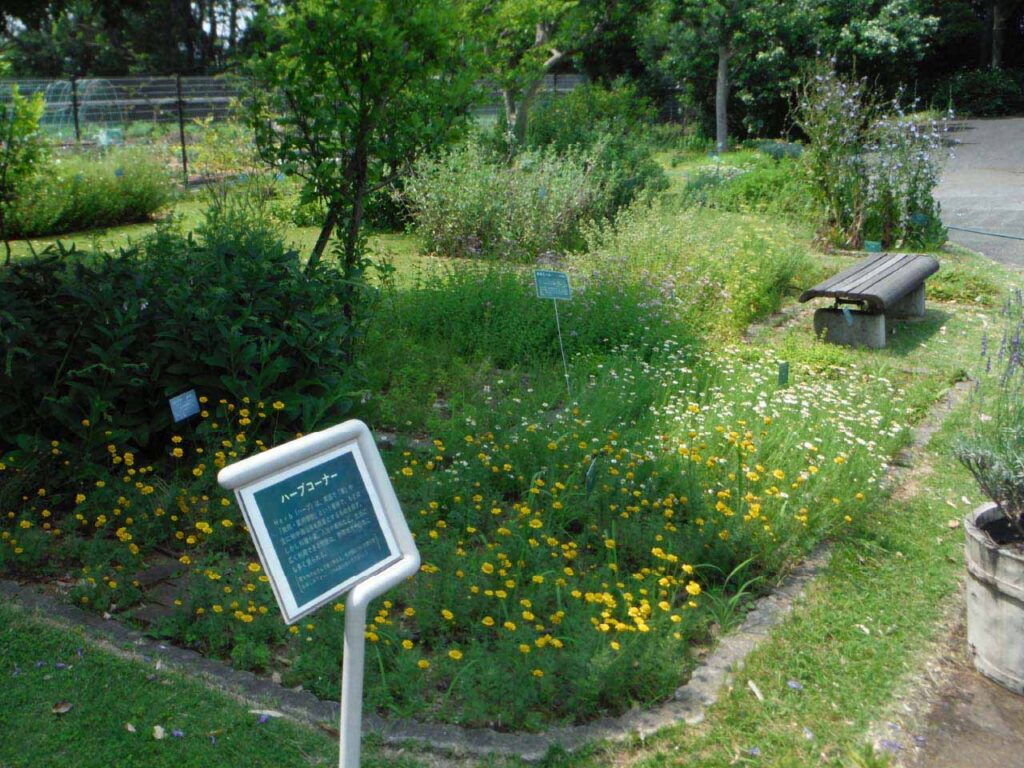
They grow a variety of herbs such as lavender, marjoram, and mint, which are used not only for their aroma but also as food, medicine, and spices. In the adjacent tropical field, native tropical crops such as potatoes and cotton are also grown in the summer. The jacaranda planted in the center of the field is in full bloom with purple flowers around June.
Conclusion
How was it? The Yumenoshima Tropical Botanical Garden is an oasis on the man-made island of Yumenoshima. The fusion of artifacts and the fertility of nature will instantly transport visitors to another world. Those who want to escape from the daily grind should pay a visit. Passing through waterfalls and tunnels, cooling off in a tropical house with palm leaf roofs, you will feel as if everything is being reset.
In the next issue, we will discuss the history and evolution of the mysterious man-made island called “Dream Island,” which is the mother of this oasis-like space.
I would like to introduce the history and transition of this mysterious artificial island called “Dream Island,” which is the mother of this oasis.
★The writer of this blog: Ricky★
Leave it to us when it comes to cultural matters! Ricky, a Japanese culture evangelist, will make you a Japan geek!
Basic Information
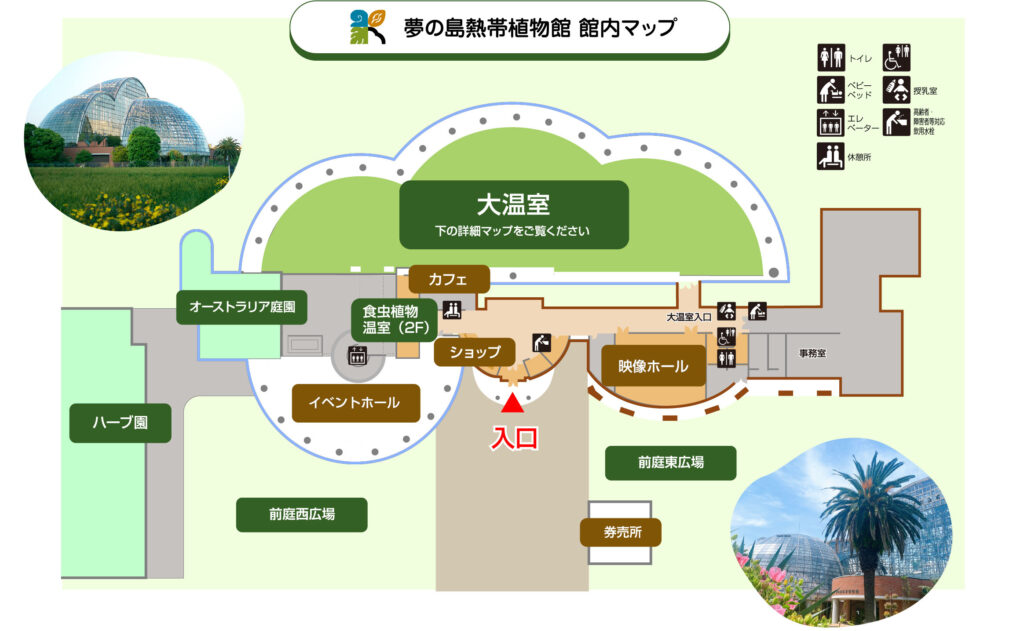
Hours of operation : 9:30 – 17:00 (admission until 16:00)
Closed: Mondays (or the following day if Monday is a national holiday), December 29 – January 3
Access : 15 min. walk from Shinkiba Sta. on the JE JR Keiyo Line, Rinkai Line, Yurakucho Line, or 7 min. walk from Yumenoshima Sta. on the Ki11 Toei Bus Line from Kiba Sta. and Toyocho Sta. on the Tozai Line.
Regular admission: ¥100 for junior high school students (free for Tokyo residents), ¥250 for adults, ¥120 for seniors (65 and over)
Group discount (20 people or more): Junior high school students 80 yen, adults 200 yen, seniors 90 yen
However, free admission for holders of a disability certificate, rehabilitation certificate, or love certificate and one accompanying person.
Annual Passport: Junior high school students and adults 1,000 yen, seniors 480 yen
Source
Official HP


